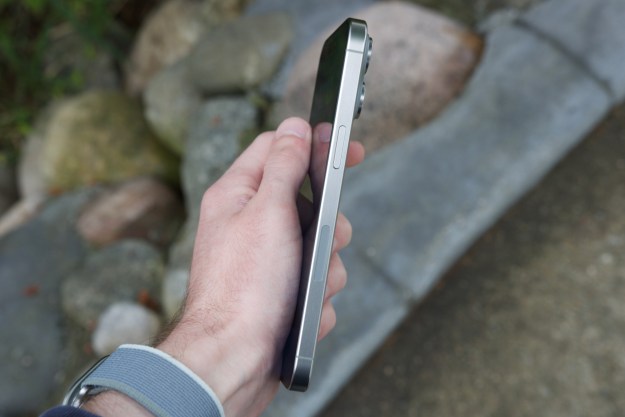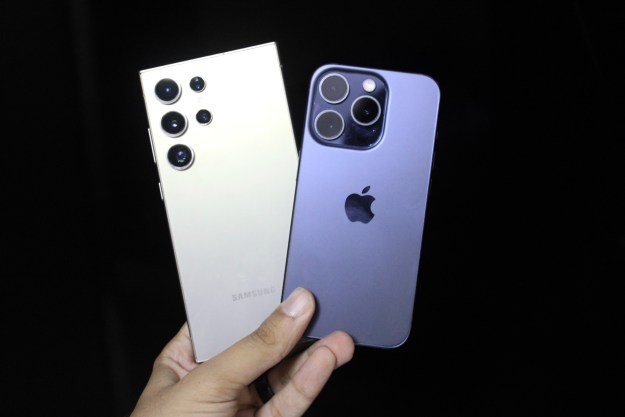 For the first couple of days after my new Samsung Galaxy S3 arrived we were inseparable. I sat at my computer with my phone tapping the screen back to life every time it died. I insisted my irritated wife ask it questions. I was unable to make it through a TV show or even a meal without checking my email or scanning Facebook updates. I watched movies I didn’t even want to watch on Netflix simply because I could. In bed, in the car, even on the toilet, the S3 was my ever present companion, my beautiful, high-tech window on the world.
For the first couple of days after my new Samsung Galaxy S3 arrived we were inseparable. I sat at my computer with my phone tapping the screen back to life every time it died. I insisted my irritated wife ask it questions. I was unable to make it through a TV show or even a meal without checking my email or scanning Facebook updates. I watched movies I didn’t even want to watch on Netflix simply because I could. In bed, in the car, even on the toilet, the S3 was my ever present companion, my beautiful, high-tech window on the world.
The honeymoon period is now over. The features I didn’t instantly fall in love with will now go unused for long periods. I’ll play with my phone and needlessly check things less and less often as the weeks roll by. Eventually my S3 will be handed down as a cast-off, or sold off to some stranger. Within two years I will have found a new phone to fawn over. I’ll no longer be impressed by what my S3 can do. It will have become an amalgamation of tiny flaws that have gradually grown into an overwhelming urge to ditch it and get something new. That something new will offer a few tiny improvements that a complete newcomer to smartphones would be unable to explain or understand.
Slight improvements
With each new wave of smartphones, the jump in quality gets exponentially smaller. Manufacturers have to create reasons for us to upgrade. Consumerism and the capitalist system rely on it.
Samsung only released the Galaxy S3 in May, but has already sold more than 10 million of them. Apple sold 26 million iPhones between April and June of this year. Considering that over 50 percent of mobile subscribers in the US have smartphones now (comScore is estimating 110 million people in the US own smartphones) you might expect a downturn in demand.
It’s not just about placing a smartphone in the hands of those who don’t have one yet (although feature phone owners are still upgrading in droves). The two-year subsidized contract cycle encourages
How do manufacturers create demand?
The iPhone 5 is already being touted as the must-have device of the year, and we don’t even know anything about it. That’s largely because it’s expected to represent a major improvement over the last iteration, but it probably won’t really.

A few people suspected that Siri could probably work on the iPhone 4, and some developers even ported it to prove the theory. It works. Apple didn’t roll it out to the iPhone 4 because it served as an extra incentive to upgrade.
The Galaxy S3 offers a bigger and better screen than the S2 but, much like the iPhone update, the rest of the improvements are fairly minor. It’s faster, it has more storage, and the battery life has been improved.
The carrot of 4G is only tempting if you do a lot of downloading, and you live in the right area. Features like NFC for contactless payment have yet to really take off with consumers.
Ask yourself why you’re upgrading
Realistically, the urge to upgrade is only partly because of the new features and performance improvements on offer. In effect, I can do almost everything I can do on my Galaxy S3 with my old HTC Desire, and it’s more than two years old. I’m talking about the core features you use daily here like checking email, browsing the Web, messages and calls, playing games, and even watching TV shows and movies.
Yes, the S3 will do everything faster and it looks nicer, but it’s more a matter of want than need.
If we’re really honest, the tech industry is also driven by fashion. The latest devices serve as status symbols. Specific brands project lifestyle choices and reflect personalities. We are bombarded by advertising that reinforces these ideas.
What do people actually use them for?
Despite a list of great features as long as your arm, many people only use their smartphones for a limited set of things. Recent research from O2 revealed that on average people spend most time each day browsing the Web (25 minutes), checking Facebook and other social networks (17 minutes), and playing games (14 minutes). The main things they are replacing in our lives are alarm clocks and watches. 54 percent of people said they use their
It seems likely that a lot of people are paying a premium to own a fancy watch that makes phone calls. If I observe my own parents using their smartphones, it’s clear they never play games, watch TV or movies, browse the Web, use GPS navigation, or record videos. No matter how many times I tell them, they tend to have their mobile data switched on all the time even when they are in Wi-Fi range, but then since they pretty much only use their phones as phones it doesn’t really matter.
The tech industry has mastered the art of upselling. The tech press and the stores combine to convince people to buy devices that they definitely don’t need. Why is someone who only uses their computer to browse the Web, write up documents, and send emails coming home with a device sporting a 2.4GHz quad-core processor, 8GB of RAM and a graphics card capable of running the latest FPS release?
Equally, if you only send text messages, make calls, and check the time on your phone then you really don’t need a Galaxy S3. However, that won’t stop me and every other tech writer out there from telling you that it’s the phone to have, and it definitely won’t stop carriers and stores from selling you one.
Do you need to upgrade?
The answer is probably no, but strictly speaking we don’t “need” most of the things we buy. The real question is do you want to upgrade?
Incidentally, as I explained to my wife, as a tech writer I actually do “need” to upgrade all my gadgets frequently.
Editors' Recommendations
- 5 phones you should buy instead of the Google Pixel 8
- 5 phones you should buy instead of the Samsung Galaxy S24
- 5 phones you should buy instead of the iPhone 15 Pro
- A phone you haven’t heard of just beat the Galaxy S24 Ultra in a camera test
- 5 phones you should buy instead of the Samsung Galaxy S24 Ultra


